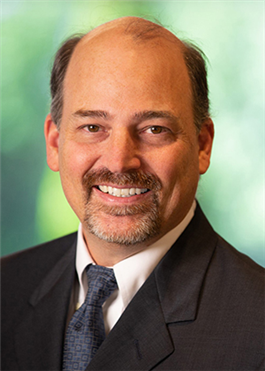
A growing number of people are taking advantage of improved materials and techniques.
Joint replacement has the potential to drastically improve a person’s quality of life, but for a long time, the situation wasn’t always so rosy.
Modern surgeries were widely introduced for some joints, including hips and knees, in the 1960s. Throughout the ’70s and ’80s, implants had unresolved complications, and surgery routinely required long hospital stays to handle pain and extended time in a rehabilitation facility. Back then, joint replacement was considered more of a last resort, to be avoided if possible.
Today, materials and pain management are much improved. People often leave the hospital hours after surgery, and recovery time has been greatly reduced.
“This is a much different joint replacement than it was even just a couple of years ago,” says Dr. Michael B. Gottsman, an orthopedic surgeon at Total Joint Specialists.
Now, people seek surgical relief at all ages, contributing to increases in the number of surgeries for all joints. More than 1 million joint replacements are performed in the U.S. each year, and that number is expected to quadruple by 2030. Knee replacement is by far the most common procedure, with about 790,000 annually.
Better surgery, better hardware
During surgery, damaged bone is removed and the joint is replaced with plastic, metal or ceramic pieces.
Better plastic for the bearing surface doesn’t break down as quickly when the metal or ceramic replacement joint moves across it; implant shape and sizing better replicate real bone for improved fit and movement; and more implants are inserted successfully without using cement, which has broken up in some patients.
“In the past, most prostheses were cemented into place, and the problem was that cement, as a nonbiologic compound, tends to break down over time, just through normal wear and tear,” says Dr. Robert Wood, a fellow orthopedic surgeon at Total Joint Specialists. “Now we’re using more biologic fixation, whereby the bones over time grow into the prosthesis, and once that attachment occurs, it’s virtually permanent.”
If the implant fails eventually—whether from infection, trauma, or loosening or wearing down of parts—surgeons perform a revision surgery to replace the replacement.
A gentler patient experience
As materials improved and surgical techniques were refined, more attention turned to making the procedures easier on patients.
“People used to spend a whole week in the hospital—have surgery on Monday and go home on Friday or Saturday,” Dr. Gottsman says. There was a lot of lying in bed, with the occasional physical therapy session. Mainly, Dr. Wood adds, this was for pain control and safety of the patient.
Now, many healthy patients with a good support network go home the same day as surgery. The key is getting people on their feet and walking within an hour of surgery.
“We’ve proved that it’s safe for people to get up and get moving and climb stairs and be in their own home very early in the postoperative period,” Dr. Wood says. “We’re doing a much better job at managing patients’ pain after surgery, and so patients are very comfortable when they go home.”
Other benefits of walking ASAP after surgery include: Patients have confidence that their bodies and implants can handle the activity, hastening recovery; anesthesia side effects, including nausea, are minimized; and risk of blood clots is decreased, meaning aspirin can be used instead of heavy-duty blood thinners.
Dr. Wood says, “It’s not uncommon now for us to see people come in at two weeks after their joint replacement and be using a cane or just carrying their cane and feeling wonderful, because they are out of pain from the arthritis that they’ve been living with, and their postoperative pain is also usually very well managed.”
Booming demand
The fear of joint replacement surgery is decreasing among the public. People who need surgeries in their 30s, 40s and early 50s are comforted that implants are lasting longer, and people in their 70s and 80s are eager to live their remaining years with more movement and less joint pain.
“Expectations for people have changed, whether they’re 50 or 70. They’re saying, ‘I want to fix things so I can continue doing things,’” Dr. Gottsman says.
“That 40-year-old who has very bad arthritis and is living in 7, 8, 9 out of 10 pain, we can fix it now and we’ve got good options in 20 years to fix it again, if needed,” he continues. “Now that our revision equipment is better, we’re more likely to do that surgery at a younger age, because we know we’ve got good options on the back end.”
When evaluating older patients for a new hip or knee, Dr. Gottsman relies on the person’s physical health and function rather than age.
“The 70-year-old says, ‘Yeah, I can still play tennis, golf, pickleball. I can still hike,’ he says. “Recovery has gotten so much better, so we’re more likely to do that surgery on somebody who is older, because we know it won’t stress the body that much, like it used to.”


